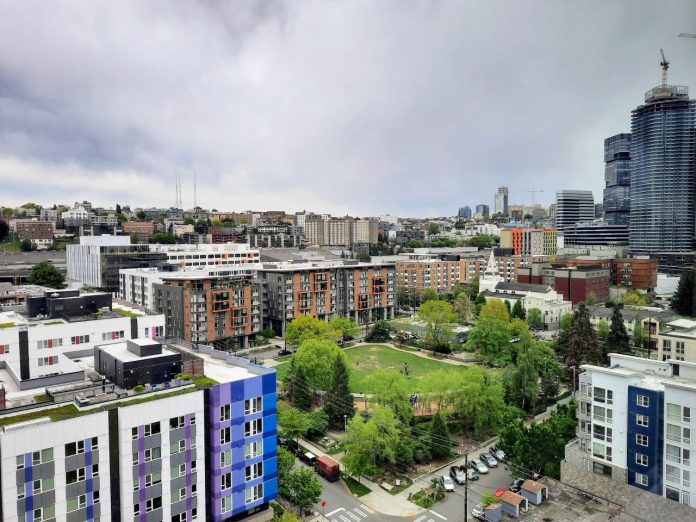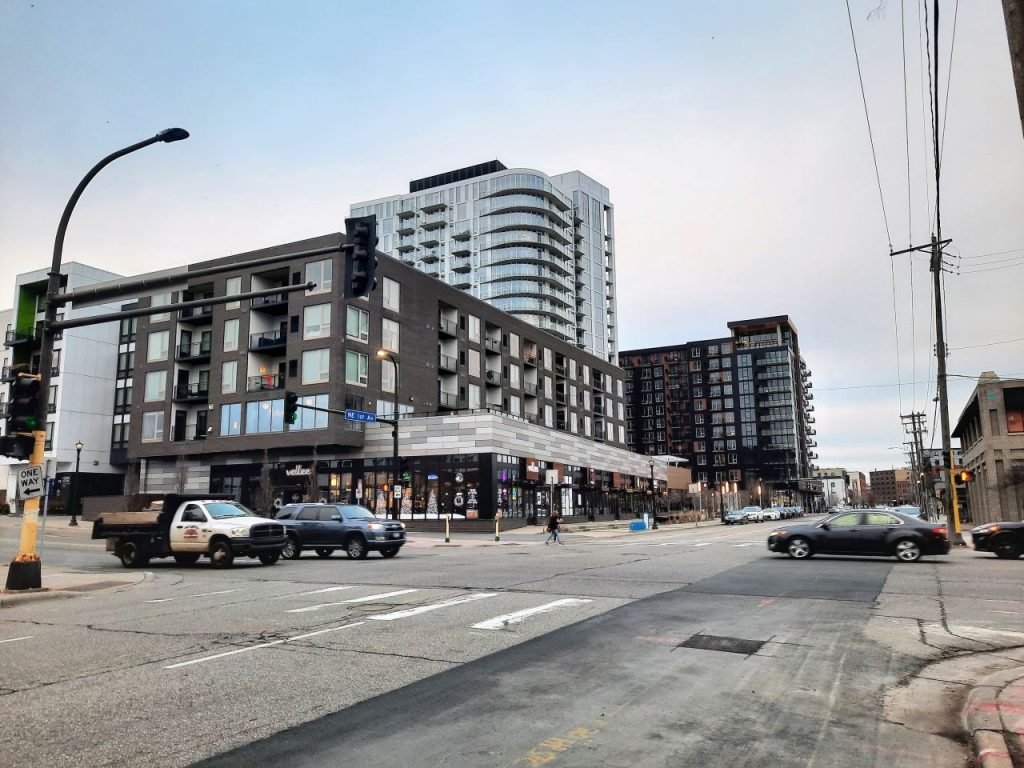
In Part I of this article, we discussed what zoning is, the history of zoning, and the seeds of the housing crisis that zoning produced. In Part 2 we’ll look at solutions.
The relationship between zoning and the housing crisis is complex, as discussed in Part I. Many of the consequences of early zoning rules are still embedded in the urban infrastructure of cities today, and have continual effects on groups of vulnerable people. For those working in urban development, the search for solutions to these problems is a complex one.
Nonetheless, a number of potential solutions exist, some of which are already being studied to determine their effectiveness. Several cities have taken steps to remedy historic zoning issues, while others highlight how difficult it can be to make changes to well-entrenched systems such as zoning and their impacts. The overall picture, however, shows that hope may be on the horizon. Let’s take a look.
What Are the Solutions?
Proposed solutions run the gamut, from abolishing zoning, to implementing stricter inclusionary zoning, boosting housing production, building specifically more affordable homes, increasing housing density in hopes of lowering prices, protecting existing communities and rejecting development that could displace people. While those fixes can be at odds, in many respects, we already know some of the answers.

William Fischel, the author of Zoning Rules, says that building more housing is a major component of the solution. As he puts it, “More housing is more housing. It’s not just a particular kind of housing [that is needed]. The trickle-down effect of housing for rich people does push down the market for every other kind of house and gets down to people who couldn’t afford a house, who can now afford that modest starter house. That’s the way it’s worked for many years.”
A review paper by Vicki Been and two colleagues from NYU found that building more housing does reduce or slow growth in rents (as well as in the surrounding area), newly-vacant houses are bought by lower-income groups, and easing land-use regulations does help to fuel the growth in housing development.
Economist Noah Smith argues that building more housing works, but that it should be done in a nuanced way. He explains that building what he terms “Yuppie fishtanks” to catch inbound high-income families, along with building long-time resident housing, and affordable housing, can help to prevent gentrification, keep rents stable, and reduce displacement. A 2019 study showed the same effect: that building market-rate housing in low-income areas decreased rents, and absorbed higher-income households wishing to move to the area. The authors note that while there is a “strong observed correlation between new construction, rising rents, and demographic change [i.e. gentrification], this is because new buildings are typically constructed in areas that are already changing.”
Samuel Stein, author of Capital City: Gentrification and the Real Estate State, explains that one part of the solution could also be social housing models well established in Europe and Singapore and being explored in Seattle and in New York City, which introduced legislation earlier this year that would establish the city’s Social Housing Development Authority (SHDA). The SHDA would build, acquire, and convert housing into social housing.
“[New York’s Social Housing Development Authority] has resident participation on the board, it has union worker participation on the board, and union standards built into it,” Stein says. “It has environmental standards built into it, and transit guidance in terms of where any development should happen.”
The establishment of the SHDA could be a major win for socialist legislators in the city, if the legislation is successful. Seattle is also pursuing a social housing development authority, with a funding measure on the ballot in February that builds off an authorizing measure that passed a public vote in early 2023.

Regardless of any mechanisms or legislation applied, Sonia Hirt, who wrote Zoned in the USA, says that due to the major shift towards remote working, the separation of function by zoning may no longer make sense. The integration of technology into daily life, and the impacts from this shift, have already led to a large number of retail store closures and commercial office spaces remaining empty. Hirt says that “things will change so much technologically in the next few years that the whole [zoning] system may simply become obsolete and not necessary.”
As for alleviating past wrongs, Richard Kahlenberg, the author of Excluded, explains that school system changes are also part of the solution. Because of exclusionary zoning, lower-income students end up in worse-quality schools, as schooling has been typically tied strictly to the neighborhood that a student lives in. Even when new housing developments are built or a neighborhood changes, it may take generations for a family to see the effects in educational achievement and income.
Kahlenberg says that he advocates strongly for “choice within the public school system, so that the quality of the school a student attends is not entirely based on the type of neighborhood that parents can afford to live in. This can be part of the more immediate solution because housing [and zoning] changes take time.”
Furthermore, Kahlenberg advocates for a Fair Housing Act that also prohibits discrimination based on economic means, rather than only race. In this respect, he explains that when a municipality proposes to ban multi-family housing, or to require large minimum lot sizes, an “Economic” Fair Housing Act would “put the burden on the municipality to provide a good justification” for the choices that they make with regard to zoning in those ways. He believes that the threat of litigation coming from such legislation would provide “a powerful incentive for municipalities to do the right thing and open up their communities to people of all backgrounds.”
Finally, in his ground-breaking essay “The Case for Reparations” published in The Atlantic, Ta-Nehisi Coates argues that reparations should be paid to Black people in the United States, due to the long history of housing discrimination and redlining in the United States. A bill was proposed to this effect in 1989, known as “H.R. 40”, which aims to create the “Commission to Study and Develop Reparation Proposals for African Americans.” The influence of zoning and its effects (including its intertwining with redlining and predatory lending) may also need to be approached from this perspective. Many cities have already taken steps to this effect.
Let’s take a look at a couple of case studies of zoning approaches and challenges in Seattle, Minneapolis, and San Francisco.
Seattle

In 2023, Washington state passed legislation overriding cities’ powers to ban zoning for multi-family housing. However, certain wealthy neighborhoods such as Broadmoor in Seattle are exempted from this rule, allowing these places to remain exclusionary. These are also the neighborhoods which had traditionally exclusionary zoning intended to keep out racial minorities and lower classes. Reported in the Seattle Times, a local resident commented on the exclusion saying that “There’s always a loophole. It’s always like that. We’ll do density everywhere else, except the rich.”
Nonetheless, the new Seattle Comprehensive Plan may make additional changes to zoning in the city that could include greater incentives for building more multi-family housing. However, the Plan is still in development (and behind schedule), and in many cases is seen to be not ambitious enough. For example, multi-family housing is proposed focused around fourplex townhomes, instead of sixplexes or more, limiting potential for rapid housing growth.
Despite carve outs for wealthy neighborhoods and an unambitious Comprehensive Plan, the city (and state) still appears to be taking steps in the right direction, albeit too cautiously.
Minneapolis
Minneapolis has been held up as a bastion of zoning reform by numerous commentators, because of the Minneapolis 2040 Plan. This was announced in 2018 and implemented in 2020. This established Minneapolis as the first major city in the US to abolish single-family zoning.
Sadly, as one reporter notes, the actual count of duplexes, triplexes, and fourplexes being built is “not impressive” — definitely not “the stuff of revolutions, and certainly not enough to address the larger supply crunch.”

Samuel Stein says “Minneapolis everyone loves, because they got rid of single family zoning. But they haven’t actually built a lot of multi-family housing there.” While this may be true for the zones that were previously dominated by single-family homes (and remain so), Minneapolis is building multi-family housing in other areas. In particular, large apartment buildings contributed most significantly to the expansion of housing stock in the city, while keeping rent growth low.
Nonetheless, Stein is concerned that at times, political talk is nothing more than that. He says: “City politicians have a way of saying ‘We will build such and such,’ but they almost never do. They change the zoning, so that someone else can build something, but there’s so many other factors that determine what a private builder will actually build.” This highlights the challenges inherent in making changes to zoning laws, and the complexities that arise outside of the regulatory framework itself.
San Francisco
San Francisco was covered by Richard Rothstein in his well-known book, The Color of Law, as an example of a city that employed federal housing policies in service of racial segregation from the 1930s through the 1950s. But we now consider San Francisco to be a bastion of liberal and progressive values. Have things, including in zoning policy, changed?

A project by Berkley found that in San Francisco 86% of residential land is still zoned for single-family housing. In addition, single-family zoning is strongly associated with resident populations that are predominantly white. The authors note that “single-family zoning not only restricts the construction of affordable housing, but is a clearly powerful policy mechanism for the perpetuation of racial and economic segregation across the region.”
Taking a broader state-wide perspective, zoning for single-family housing applies in 95% of California’s residential districts. To combat this, a law was passed in 2021 abolishing zoning for single-family housing in California. Five districts sued the state in 2022, and recently, a Los Angeles court found that the law is unconstitutional. The law was then struck down for the five districts that resisted it, and it may be struck down state-wide as well.
Conclusions
The idea of zoning, i.e. maintaining positive uses and reducing nuisance, health impacts, or noise, has good intentions. But the ways in which it has been used has had negative effects for large groups of people. The shift towards YIMBYism and creative solutions, as well as the increasing recognition of past and continuing racial harms, perhaps shows that the tide is turning, however.
Correction: This article had incorrectly stated that New York City had already passed legislation establishing a social housing developer. That bill was only introduced, not passed. We regret the error.
Leah Hudson is an editor and writer published by Insider, Atlas Obscura, and Penguin Random House New Zealand. Leah loves to write about sustainable urban development, mental health, and matters of the heart. She spends her time reading, walking her dog, and eating unreasonable amounts of chocolate. You can find her at https://leahhudsonleva.com/.

